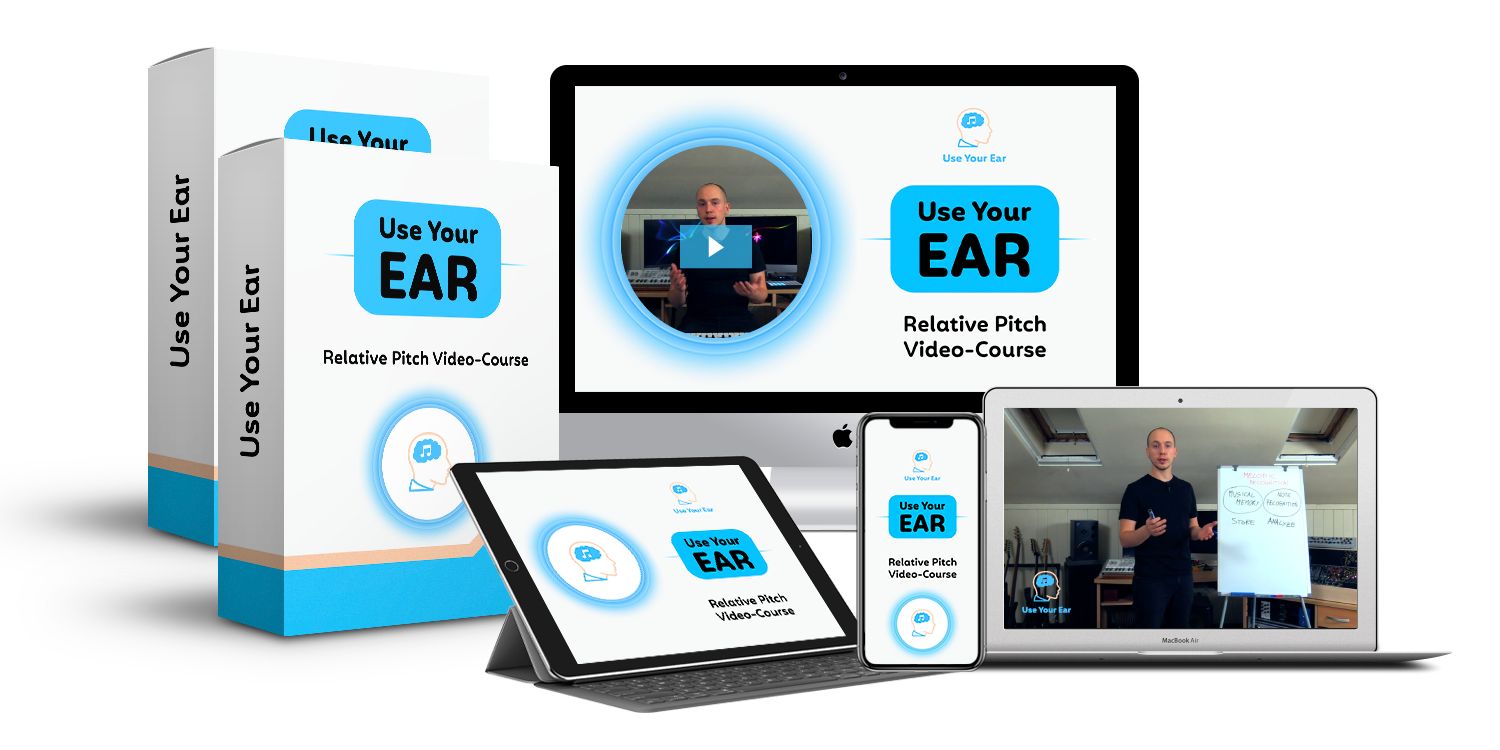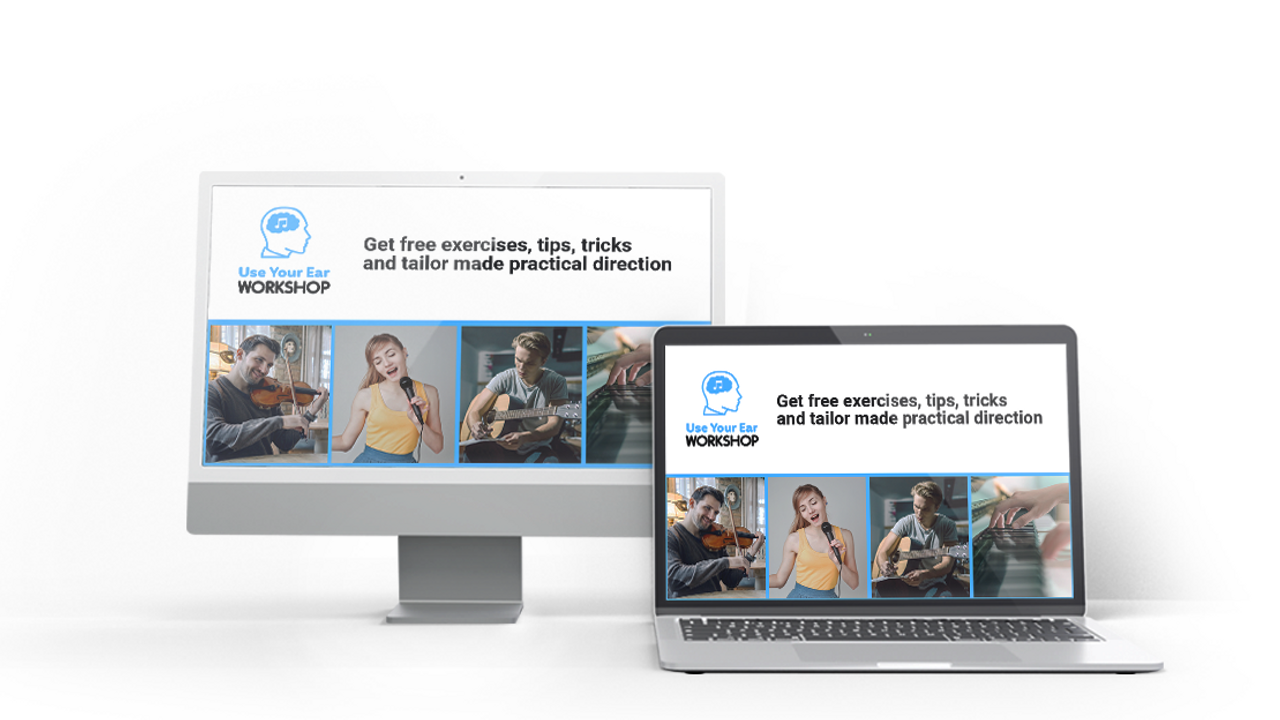Rhythm Ear Training
The ability to "keep a beat" is an essential skill for any musician. Without a sense of rhythm, it can be difficult to play music with others and to stay in time with the music. Rhythm ear training is the process of developing a sense of rhythm.
As you become more familiar with music, you'll want to be able to identify different rhythms when you hear them. This is a skill that can be developed through ear training. By repeatedly listening to and trying to identify various rhythms, your ear will gradually become attuned to them.
Another aspect related to rhythm ear training is improving your rhythmic accuracy and precision. A greatly sought-after skill for musicians is to play with very accurate timing. The best professional session musicians are able to clearly perceive if a note is played 5 milliseconds ahead or behind the beat, that’s an impressive rhythmic accuracy. Although you might not want to get as obsessed as that, you can improve your rhythmic accuracy with rhythm ear training.

Importance of rhythm ear training
- As mentioned above, rhythm ear training allows you to identify the rhythms used in a piece of music. This can make it easier to keep up with the tempo and play in time.
- Rhythm ear training can help you improve the rhythmic accuracy and precision of your playing.
- Rhythm ear training can help you to communicate better with other musicians.
Rhythm ear training is about:
Understanding rhythms
The first step in rhythm ear training is to develop an understanding of what rhythms are. A rhythm is simply a repeating pattern of beats. The simplest kind of rhythm is just a steady beat, like a metronome.
More complex rhythms can be made up of different combinations of beats. For example, a waltz has a rhythm of 3 beats, while a 4/4 time signature has a rhythm of 4 beats. There are countless other examples of rhythms in music.
As you listen to music, try to identify the different rhythms you hear. You may want to tap your foot or clap your hands along with the music to help you keep track of the beats. These are the fundamentals of ear training rhythm practice.

Read Rhythms
One of the best ways to improve your rhythm ear training is to simply read rhythms. This can be practiced using sheet music and a metronome.
To read rhythms, we need to understand time signature. A time signature is a symbol at the beginning of a music notation staff that tells us how many beats are in each measure.
For example, in 4/4 time, there are four beats in each measure, and a quarter note equals one beat. In 3/4 time, there are three beats in each measure, and a quarter note equals one beat. In 6/8 time, there are six beats in each measure, and an eighth note equals one beat.
When you are reading rhythms, you will be looking at both the time signature and the notes in the piece of music to figure out how the rhythm should sound.
Speaking out rhythmic patterns
Once you've developed an understanding of rhythms as you practice rhythm ear training, the next step is to start speaking out the rhythmic patterns you hear. This is similar to counting out the beats.
For example, in 4/4 time, if you see 4 eighth notes, you would count "1-and-2-and." This is because a quarter note equals one beat, so two eighth notes equal one beat. So in this case, you are counting two beats worth of notes.
If you see 4 sixteenth notes, you would count "1-eh-and-ah." This is because a sixteenth note equals a quarter beat. So in this case, 4 sixteenth notes equal one beat.
When you are first starting rhythm ear training, it can be helpful to count aloud as you read the rhythms. This will help you to keep track of the beats and keep a steady tempo. As you become more familiar with reading rhythms, you will be able to do it without counting aloud.


Identifying syncopated rhythms
Syncopated rhythms are irregular rhythms. Syncopated rhythms can be difficult to identify, but there are some clues that can help you figure out what is going on.
The first clue is that syncopated rhythms often involve unexpected notes. In a regular rhythm, the notes will follow each other in a predictable pattern. But in a syncopated rhythm, the notes might not follow each other in a predictable pattern. For example, this can be done by skipping a beat.
The second clue is that syncopated rhythms often use accents. An accent is a note that is played louder or more strongly than the other notes in the rhythm. Syncopated rhythms often use accents to emphasize the irregularity of the rhythm.
Rhythms ear training exercises
So far, we have given you some ideas for ear training rhythm exercises to practice. However, rhythm ear training is by far the least problematic aspect of ear training. Pitch is, by a large margin, more difficult to master. But why is this so? That is because the internet is full of ineffective ear training methods for developing relative pitch skills.
Musicians are often lost practicing interval ear training exercises or adopting a trial and error approach and end up totally frustrated, unable to even slightly improve their perception and understanding of musical pitch. Obviously, musicians can’t play by ear if they don’t master their understanding of musical pitch first. Luckily, we finally have an effective solution to this problem. Keep reading if you’re interested in that.

Want to develop an intuitive sense of musicality?
we can help you
Relative Pitch Video-Course
Use Your Ear is the perfect video course for anyone who wants to improve their relative pitch skills. This course is designed to save you time and frustration by focusing on the most effective exercises for your current level.
You'll learn to:
- Transcribe melodies and chords on the fly, following our proprietary step-by-step ear training method.
- Freely improvise over any songs by ear, without any mechanical/theoretical thought process involved.
- Create music that comes from your heart.
- Effortlessly play and sing in tune.


Free Use Your Ear Workshop
Ever wished you could just listen to a song and know what notes or chords are being played, or how to play it? In this free workshop, you will:
- Learn how great musicians recognize music intuitively and how you (or anyone else) can do the same.
- Learn our proven method to developing relative pitch way faster and easier than you thought possible.
- See first-hand how our students get results quickly.
- Practice effective and innovative exercises from the Use Your Ear method. Understand how to improve - no more guessing.
Register for the free Use Your Ear workshop right now.
Free Use Your Ear WorkshopIndividual online lessons
If you want to get started with learning relative pitch or if you're just looking for some extra help, and you like the idea of having private lessons with a qualified expert ear training teacher, our online one-on-one lessons are a great option. In these one-on-one sessions, you'll get personalized attention and feedback to help you develop the skills you need to succeed.
Online one-on-one lessons
How our students quickly learn to recognize chords and melodies by ear
Check out how our students go from zero to recognizing melodies and chord progressions by ear in a few months, following the Use Your Ear method.
Who are our courses for?
Our courses are for anyone who wants to improve their musicality and find new confidence as a musician. Whether you are a complete beginner or a more seasoned musician, our courses are for you. We've had students of all ages and levels of experience from all over the world. The Use Your Ear method is a science-based, step-by-step ear training method that allows musicians to go from zero to advanced ear training skills in months. So register today and start your relative pitch ear training journey.



